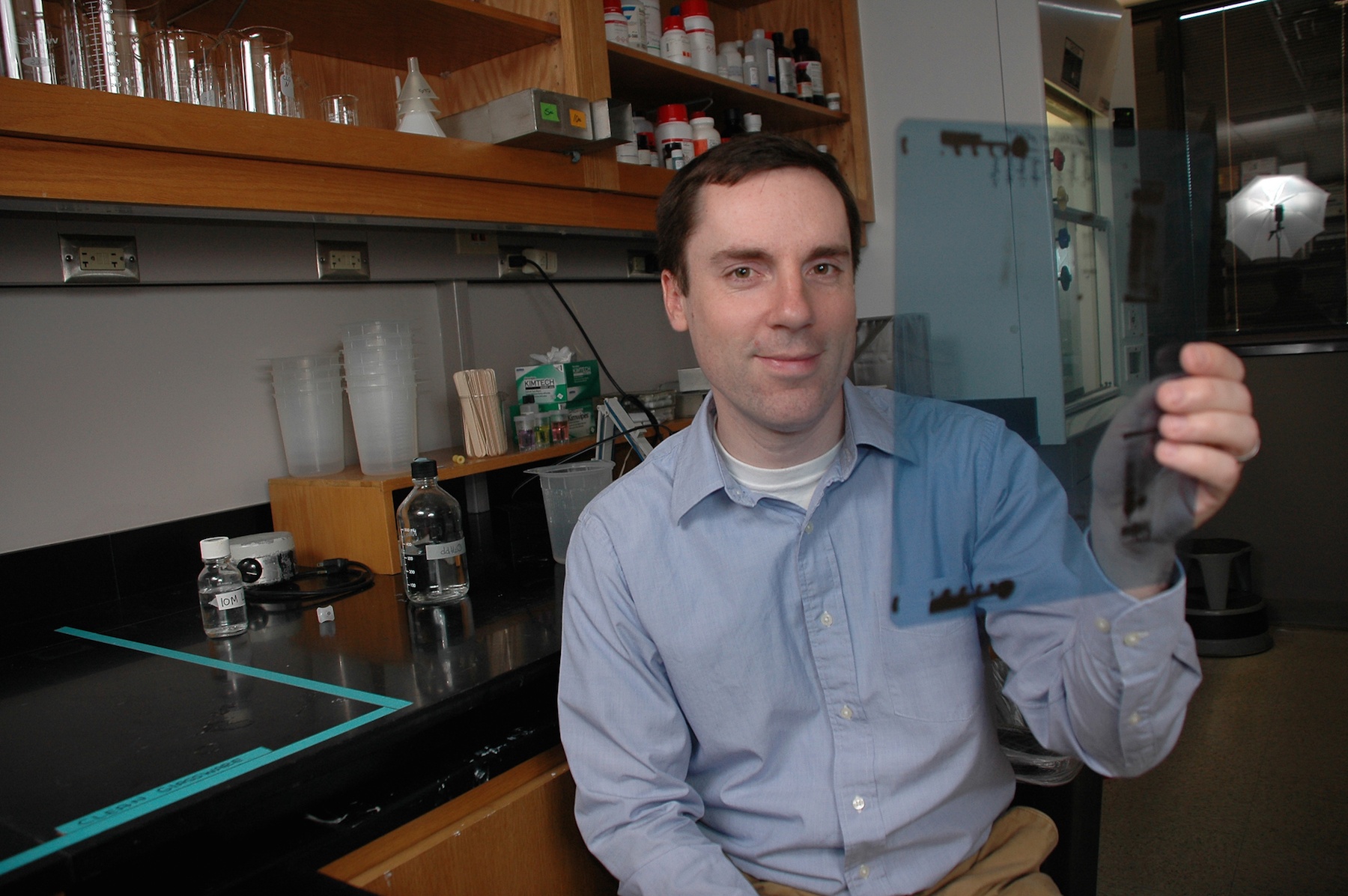OMRF has received a five-year, $1.7 million grant to look at how DNA replicates itself. The results could lead to new information about how cancer and birth defects develop.
The grant, awarded by the National Institute of General Medical Sciences, will allow OMRF researcher Chris Sansam, Ph.D., to better understand what goes wrong in cells during the development of cancer and birth defects by applying what is learned in a normal setting in the genes.
DNA replication is the process by which genes duplicate. Every human begins as one cell, but the body is comprised of billions, meaning countless cell divisions occur during a lifetime.
“Every time a cell divides, the entire genome has to be replicated accurately, but the mechanisms responsible for that are still largely unknown,” said Sansam. “If we can understand how things are supposed to operate under normal circumstances, then we can identify what happens when things go wrong.”
DNA replication occurs constantly in the body, said Sansam, starting from a single cell that contains all the genetic material inherited from each parent. As cells divide, a full complement of genetic material has to be copied and put into each new cell produced, so it is not surprising that things can go awry if mistakes occur in the process.
“If the genetic material isn’t copied accurately, that leads to cancer. If it happens during embryonic development, it causes birth defects,” said Sansam, who is an assistant member in OMRF’s Cell Cycle & Cancer Biology Research Program.
Sansam’s grant aims to understand exactly how this process functions by identifying the genes, molecules and mechanisms that are needed to correctly replicate our DNA.
To accomplish this, Sansam uses zebrafish, semi-transparent, aquatic creatures that grow to no more than an inch in length. The tiny fish, which are common in home aquariums, are especially good scientific subjects because they share 70 percent of humans’ genetic code.
“The zebrafish is an incredible model to study, because virtually all basic cellular processes are the same in fish as they are in humans,” said Sansam. “We can learn a lot about how things work in humans by first studying an accessible, low-cost organism like zebrafish.”
Sansam joined OMRF in 2010 from the Massachusetts Institute of Technology (MIT) in Cambridge, Mass.
“It is unusual for a young investigator to be successful in a first try at getting a grant of this magnitude funded,” said Gary Gorbsky, Ph.D., who heads the Cell Cycle & Cancer Biology Research Program at OMRF. “However, the research that Dr. Sansam proposed has so much novelty and importance that the grant review panel found it very exciting. We’re proud of the work that Dr. Sansam and his laboratory members are doing, and we anticipate many fantastic discoveries in the future.”
The grant, number 1R01 GM121703-01, is from the NIGMS, part of the National Institutes of Health.



